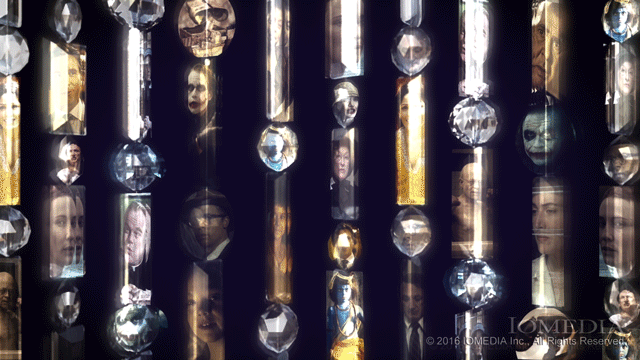81st and 82nd ANNUAL ACADEMY AWARDS
How can the biggest show on Earth also be the most intimate?
Client: The Rockwell Group
Producers: 81st - Laurence Mark + Bill Condon / 82nd - Bill Mechanic + Alan Shankman
Director: 81st - Roger Goodman / 82nd - Hammish Hamilton
Role: Design, Art Direction, Previsualization, Motion Graphics, Press Renderings
Rockwell Group reimagined the stage on which the Academy Awards ceremony takes place, creating an immersive experience to engage an international television audience of more than 37 million people each year.
As the first architect invited to design the set of the Academy Awards, Rockwell Group brought cutting-edge theatrical production techniques to the 80-year-old ceremony. The goal was to create a live encounter for television viewers.
As the founder and leader of IOMEDIA’s design visualization team embedded at Rockwell Group, I was involved from initial concept development through final press renderings, developing sets that evoked more of an elegant party, rather than a formal performance atmosphere. Modern stage technologies were combined with an emphasis on spectacle and community.
For the 81st Annual production, the theater and sets were reorganized and re-envisioned to enhance the energy for the live and broadcast audiences, powered by a visual narrative that unfolded through 12 transforming sets throughout the night.
The first major innovation was the removal of the pit-like separation between performers and the audience.
By relocating the orchestra onstage, on an elaborate, moveable bandstand, now only four steps separated the audience and presenters. We removed seating from Rockwell Group’s original 2001 Kodak Theater design (I also provided design previsualization for the the original theater), and replaced it with a proscenium stage to bring the audience closer—allowing at-home viewers to see celebrity reactions in the front rows.
The second was the central design element – an elaborate 6,000 lb curtain comprised of over 100,000 Swarovski crystals.
The massive curtain (which solved the design challenge due to the proscenium opening being smaller than the arch of the room) was both monolithic and iconic in appearance, yet comprised of thousands of individual elements. Accurately capturing this dichotomy visually was essential to realizing Rockwell’s vision.
In a dramatic integration of technology and movement, we replaced the traditional single giant flat screen that showed movie clips and montages, with 20 fixed LED screens and five LED moveable ones that transformed and reconfigured based on the needs of the choreography of the show.
For the 82nd Annual show, with hosts Steve Martin and Alec Baldwin, we wanted big, open, crisp environments that would work for comedy. That led us to the idea of the set being about immersion in the world of movies. Stylistically, the optimism of modernism in L.A. and the heyday of Hollywood was the perfect way in. To frame hosts as well as the presenters, open screens with modernist decorative patterns were used to create lighting designs as backdrops. In contrast to the previous year's production, where the flooring was black, the updated show featured a modern, white look.
Dynamic sets with integrated LEDs and projected images were used to create a constant play of light and activity. The set had multiple presentation areas whose pieces will be able to quickly transform, all of which was previsualized. Replacing the 5 flat moveable screens from the 81st Annual show, for the 82nd Annual show three curved LED screens (the largest nearly 30 feet in diameter) were used to allow for simultaneous action in order jump cut more quickly, again, responding to the challenge of creating a snappier program, one which better suits the pace of this year’s comedic presenters. Performers are surrounded by and immersed in movies playing out on the cylindrical screens.
For both awards shows, my team produced a series of previz animations to be used as guidelines for the on-air motion graphics, that were coordinated with the physical set in terms of narrative, design and materiality.
Most experimental was the use of multiple reflective surfaces in small slivers throughout the stage and auditorium from a Venetian blind-style set piece to low walls treated with frosted and polished faceted mirrors – contributing to the sense of connectedness by allowing people watching the show to see winners and presenters on the stage and the audience reaction at the same time.
The overall design intent of both productions was to foster an environment for the natural levity and drama of the show. Great moments are generally spontaneous – yet you can't plan spontaneity, so we attempted to create a room where people were relaxed and felt like they're part of the same community, through the use of both big gestures and little gestures, resulting in an environment that feels both grand, yet intimate.











